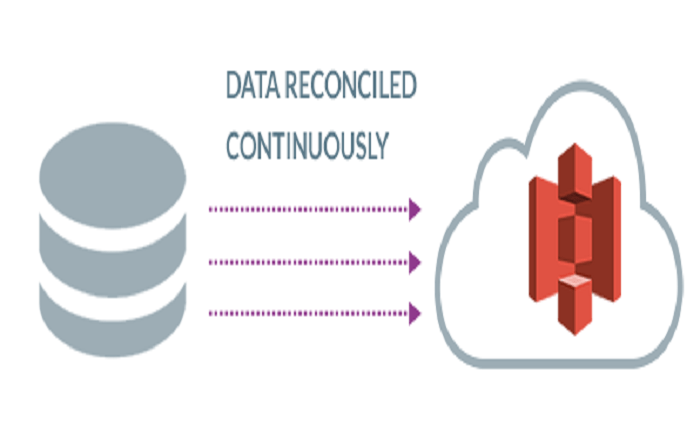In today’s data-driven landscape, seamless data management is pivotal. The transition from Oracle to Amazon S3 (Simple Storage Service) marks a strategic move for businesses seeking a scalable and efficient data storage solution. This article explores the significance, process, and benefits of migrating from Oracle databases to the robust S3 storage infrastructure.
Unlocking the Transition: Oracle to S3 Migration
Migrating from Oracle to S3 involves transferring data from a traditional relational database management system to a cloud-based object storage service. This shift empowers businesses with scalable and cost-effective storage, revolutionizing their data management strategies.
Key Aspects of the Transition
Scalability and Flexibility: Amazon S3 offers virtually unlimited storage capacity, enabling businesses to scale their data storage needs seamlessly. Its flexible architecture accommodates diverse data types, including structured, semi-structured, and unstructured data.
Cost Efficiency: Compared to Oracle’s licensing costs and hardware maintenance, Amazon S3’s pay-as-you-go pricing model translates to significant cost savings. Businesses pay only for the storage they consume, eliminating the need for upfront infrastructure investments.
Security and Durability: Amazon S3 ensures high durability and data redundancy across multiple Availability Zones. Coupled with robust encryption options and access control mechanisms, it provides a secure data storage environment.
Ease of Access and Integration: S3 integrates seamlessly with various AWS services, facilitating easy access to data for analysis and application development. Its compatibility with Oracle Database tools simplifies the migration process.
The Migration Process
The migration from Oracle to S3 involves several stages, including data assessment, schema transformation, and actual data transfer. Leveraging specialized migration tools streamlines this process, ensuring minimal downtime and data integrity.
Advantages of Oracle to S3 Migration
Enhanced Scalability: S3’s virtually limitless storage capacity eliminates concerns about data growth, enabling businesses to scale effortlessly.
Cost Optimization: Reduced infrastructure costs and pay-as-you-go pricing model translate to significant savings in the long run.
Data Accessibility: Amazon S3 provides high availability and accessibility, enabling quick retrieval and analysis of stored data.
Improved Performance: S3’s distributed architecture ensures high performance and low latency, supporting real-time data access and analytics.
Maximizing the Transition Process
Data Assessment and Pre-Migration Planning: Before the migration, a comprehensive evaluation of the existing Oracle database is crucial. This includes analyzing data types, schema structures, and dependencies. A meticulous assessment allows for a well-planned migration strategy, ensuring minimal disruptions during the transition.
Schema Transformation and Optimization: The schema in Oracle databases might differ from the object-oriented structure of S3. Therefore, schema transformation becomes essential to align the data models for seamless integration with S3. Optimizing the schema ensures efficient storage utilization in the new environment.
Data Transfer and Migration Tools: Several tools and services provided by AWS streamline the data migration process. AWS Data Migration Service (DMS) and tools like AWS Schema Conversion Tool (SCT) facilitate efficient data movement from Oracle to S3. These tools ensure minimal downtime and secure data transfer, maintaining data consistency throughout the migration.
Migration Strategies and Approaches: Businesses can adopt various migration strategies, including bulk data transfer, incremental migration, or even hybrid approaches. Each strategy has its merits based on data volume, urgency, and downtime tolerance. A well-chosen strategy minimizes interruptions and ensures data integrity.
Post-Migration Optimization
Data Access and Management: Once data is migrated to S3, configuring access controls and permissions is crucial. Amazon S3’s robust Access Control Lists (ACLs) and Bucket Policies enable businesses to control access at various levels, ensuring data security and compliance.
Integration with AWS Ecosystem: Leveraging the broader AWS ecosystem amplifies the benefits of S3. Integration with services like AWS Athena for querying data directly from S3 or AWS Glue for data cataloging and ETL tasks enhances data analytics and processing capabilities.
Data Lifecycle Management: Implementing lifecycle policies in S3 optimizes storage costs by automatically moving data between storage tiers based on access patterns and data age. Infrequently accessed data can be moved to lower-cost storage tiers, optimizing expenses.
Monitoring and Analytics: Utilizing AWS CloudWatch and AWS CloudTrail for monitoring and logging provides insights into data usage, access patterns, and potential issues. These tools facilitate proactive measures to ensure data availability and security.
Continuous Optimization and Growth
The migration to Amazon S3 marks the beginning of a data evolution journey. Regular reviews, optimizations, and embracing new AWS services ensure that businesses continuously leverage the full potential of S3, paving the way for data-driven innovations and growth. Oracle to S3 migration signifies a strategic move towards modernizing data storage and management, offering scalability, cost-efficiency, and agility in an increasingly data-centric landscape.

